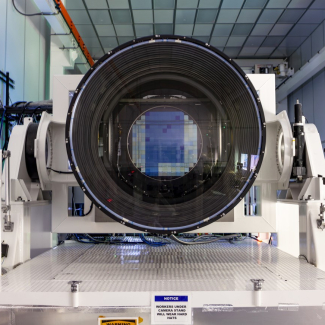
French ESA astronaut Thomas Pesquet to continue experiments on foams
|
|
The FOAM-C experiment studies the properties of liquid foams in zero gravity. It aims to uncover valuable information about the behaviour of such foams, which, often used in solid form, find a wide variety of applications, such as heat insulation and sound proofing, water purification, firefighting, cosmetics, etc. The experiment, which began last year on board the International Space Station (ISS) and is being carried out on behalf of the European Space Agency (ESA), was designed by an international research team including scientists from the CNRS, Université Paris-Saclay, Sorbonne University and Université Gustave Eiffel, with the support of the French space agency CNES. Following initial results, the experiment is now being extended, with new samples set up by Thomas Pesquet on Friday, June 11, 2021.
Although Earth is a hospitable planet, its gravity presents a major challenge for some scientists. The problem is that gravity causes liquid foams to rapidly lose their liquid component and decrease in volume, severely limiting the possibility of observing their behaviour. The FOAM-C experiment, developed by an international research team1 , proposes to get round this problem by carrying out such experiments in zero gravity on board the ISS.
First started in March 2020, FOAM-C will be extended this year with the arrival of new foaming liquids prepared by the French teams. On Friday June 11, French astronaut Thomas Pesquet will carry out the necessary preparations to set up the liquids.
FOAM-C takes the form of a set of cartridges containing liquid samples, in which pistons are used to produce foam, whose behaviour is then monitored by optical devices (cameras and a laser). The experiment's goal is principally to study the behaviour of liquid foams, in which bubbles grow in size when gas is transferred from small bubbles to larger ones. The experiment has already yielded initial results that the scientists did not expect: in space, a high degree of stability can be achieved in foams that are wetter than previously predicted by theory.
Liquid foams have a host of applications, for example in the mining industry, cosmetics, firefighting, decontamination and oil recovery, and once solidified, in heat insulation and sound proofing, shock absorption, etc. Foams are currently formulated on the basis of general principles, due to a lack of specific knowledge about them. Being able to study them under optimal conditions should make it possible to design them better and improve our understanding of their properties.

© ESA
- 1Scientists from the Laboratory of Solid-Sate Physics (CNRS / Université Paris-Saclay), the Paris Institute of Nanosciences (CNRS / Sorbonne Université) and the Navier Laboratory (CNRS / Université Gustave Eiffel / Ecole des Ponts ParisTech) took part in the project. FOAM-C also involves the University of Liège, Aberystwyth University, Trinity College Dublin, the University of Pennsylvania, Moscow University, Ochanomizu University, Airbus Defence and Space, Nestlé, Total , Teclis and 4Gene.


